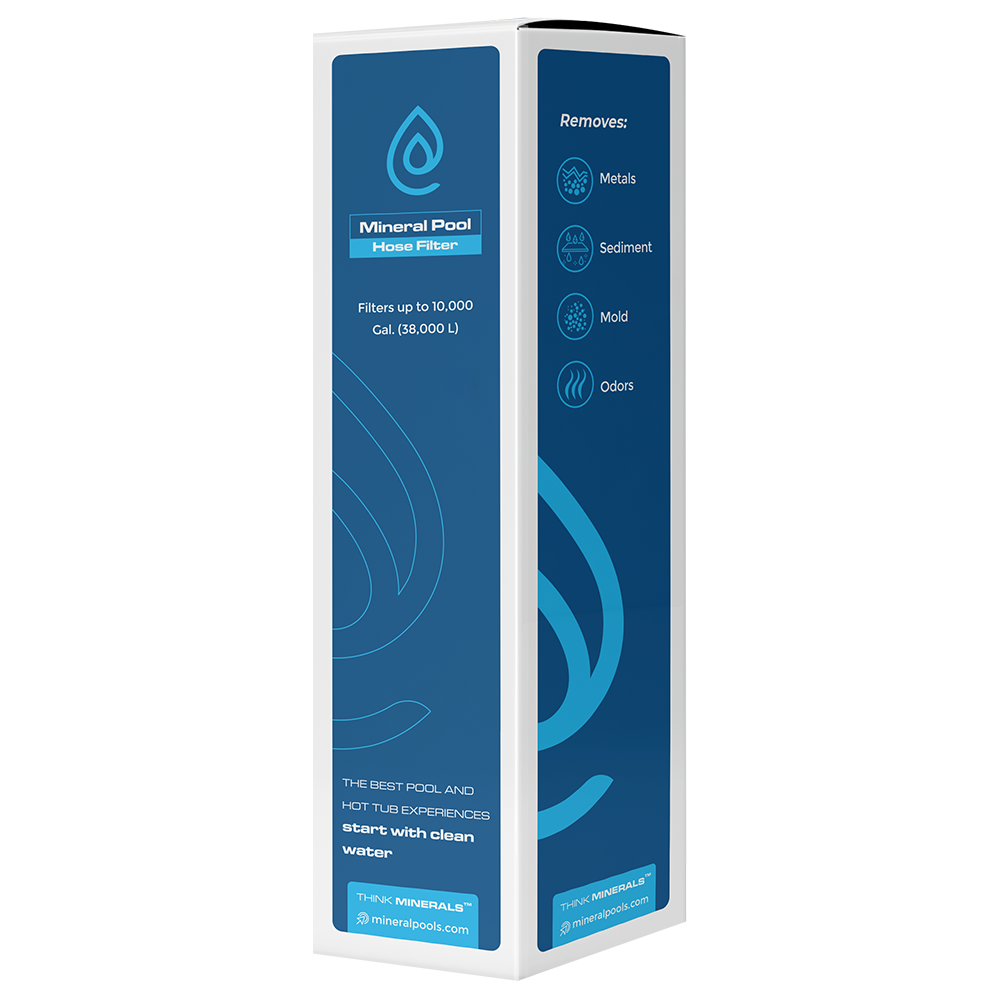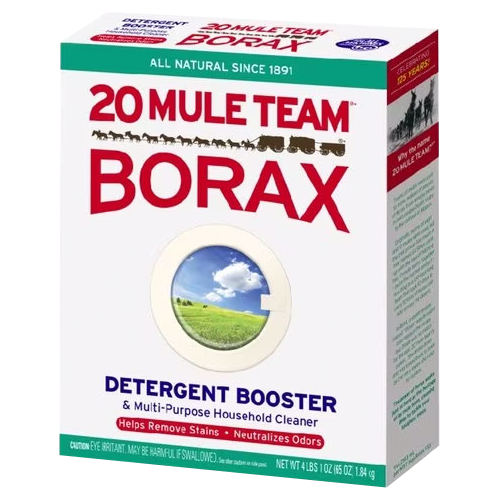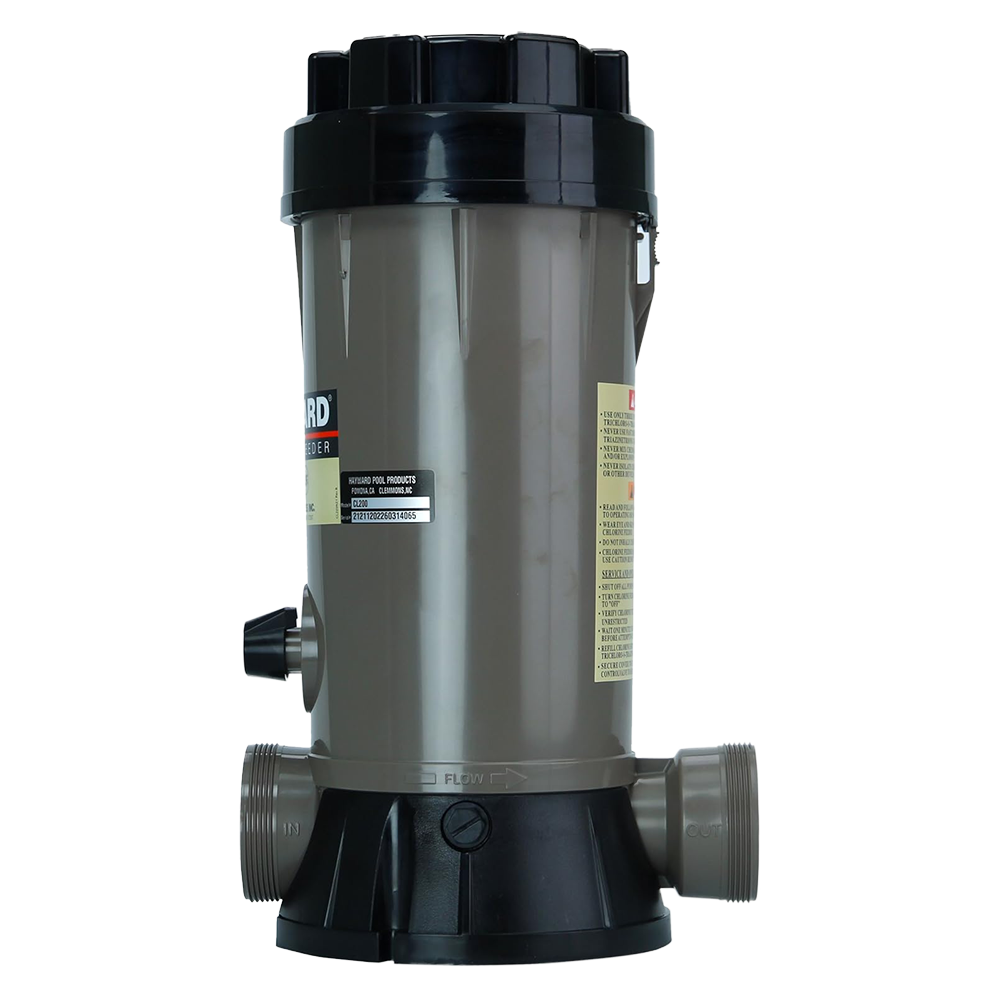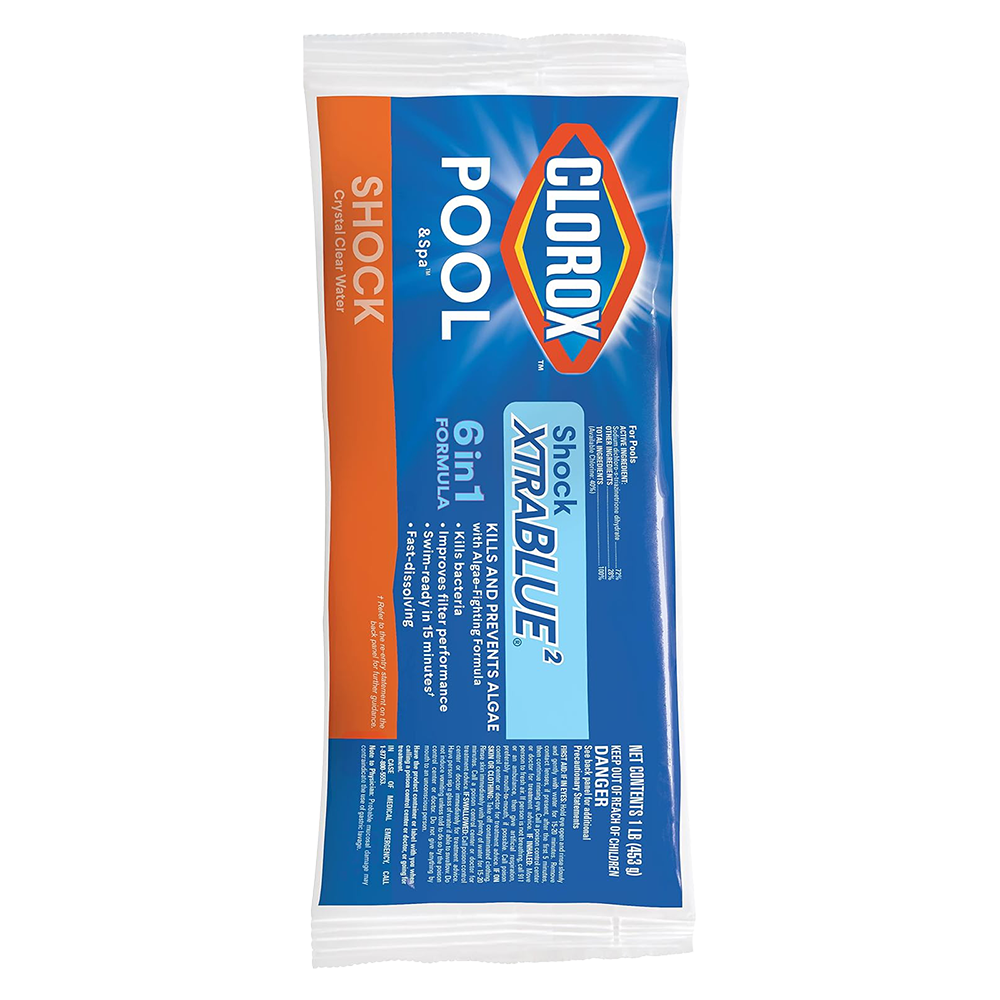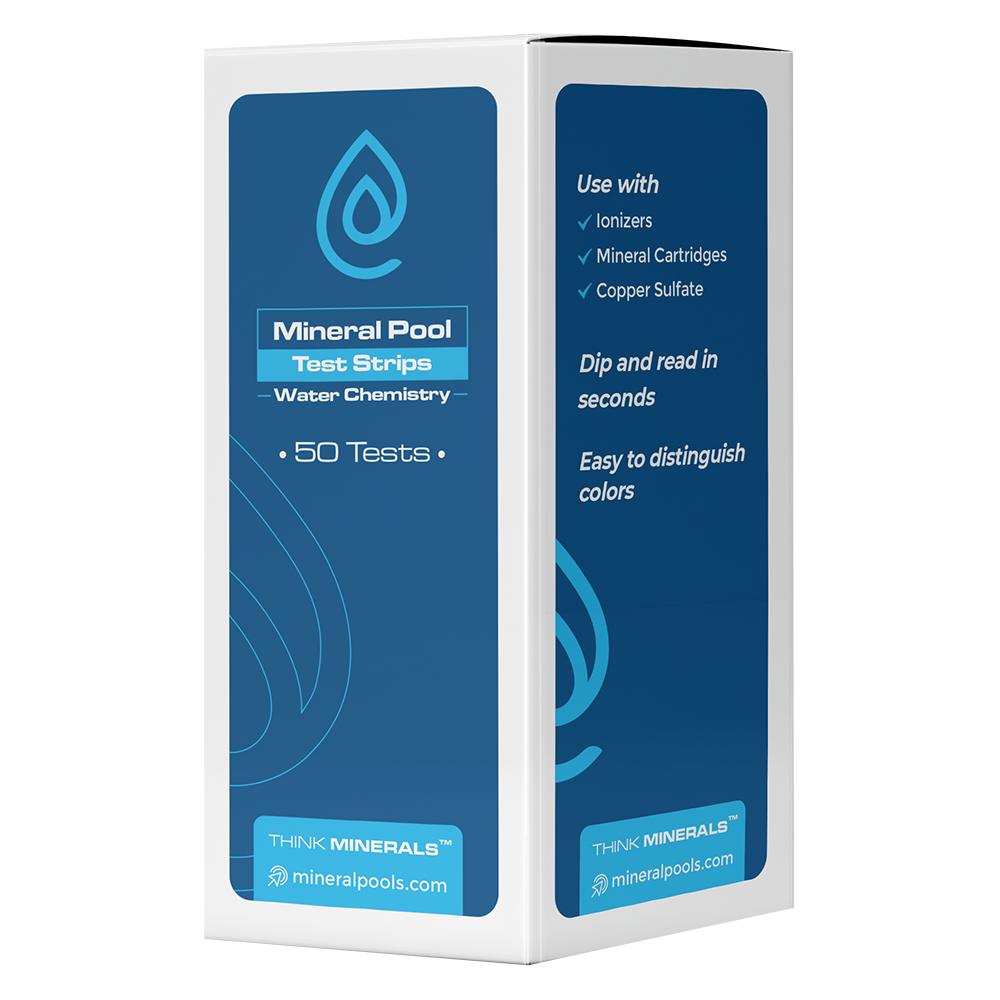You’ll be surprised how easy it can be
Spring is upon us, and that means it’s almost pool time. It’s always an exciting time of year, especially for kids. But sometimes, opening your pool can be intimidating, frustrating, and expensive. Here are some ideas on getting the most from your pool this season – so you can spend more time enjoying it and less stressing about it.
Summary
- Fill your pool with a hose filter to remove contaminants from the source.
- Balance the pH, alkalinity, calcium, and other less-known factors.
- Remove phosphates and keep them as low as possible.
- Keep the Cyanuric Acid (CYA or stabilizer) below 50 ppm.
- Use Borax or other borate products to buffer the pH.
- Use a mineral system to prevent algae growth.
- Maintain a low level of chlorine with an inline chlorinator.
- Use a shock regularly to burn off excess organics.
- Test water weekly and adjust parameters as needed.
1. Start with a Clean Fill
When topping up your pool in the Spring, it’s essential to use water that’s as pure and clean as possible. There’s no point dumping contaminants into the pool just to remove them later using chemicals.
The best way is with a filter that attaches to your garden hose. These remove dirt, sediment, metals, and odors that can sometimes accompany your water, especially if it’s coming from a well. The filter screws onto the end of your garden hose. Then, place the attached filter into the pool and turn on the water.
2. Balance the Water
Once the pool is full, the water needs to be balanced.
Balanced water:
- is safer for your pool surfaces
- helps equipment work more efficiently
- ensures that sanitizers are effective
- feels softer on your skin during and after use
The three critical elements to balance are pH, alkalinity, and calcium, which make up the water’s saturation index. If this index gets too far to one side, water will deposit minerals and other dissolved materials onto surfaces. If it’s too far on the other side, the water becomes corrosive, slowly damaging pool equipment and surfaces. On both ends of the spectrum, chlorine or bromine sanitizer is less effective.
A trouble-free pool starts with a good water balance. The easiest way to get the correct balance is to take a water sample to your local pool store. They will recommend the products you need to increase or decrease pH, alkalinity, and calcium.
Recommended Water Parameters for Swimming Pools
| Parameter | Recommended Value | Testing Frequency |
|---|---|---|
| pH | 7.2 – 7.8 | Weekly |
| Alkalinity | 80 ppm – 120 ppm | Weekly |
| Calcium Hardness | 200 ppm – 400 ppm | Weekly |
| Phosphates | 0 ppb – 200 ppb | Weekly |
| Chlorine | 1 ppm – 3 ppm (0.5 ppm with minerals) | Weekly |
| Stabilizer (Cyanuric Acid / CYA) | 30 ppm – 50 ppm | Monthly |
| Borates | 30 ppm – 50 ppm | Monthly |
3. Remove Phosphates from Pool Water
Apart from the critical three, two other factors can ruin your summer fun: Phosphates and Cyanuric Acid.
Phosphates get into the water through runoff, detergents on bathing suits, and sometimes tap water. Phosphates cause problems because they are food for algae. The higher the phosphate level, the faster algae grow.
Phosphate levels should be tested weekly and kept as close to zero as possible. Several products are on the market to reduce the level, but the best ones use a mineral called lanthanum.
4. Keep CYA / Stabilizer Below 50ppm
Cyanuric Acid, or CYA, is used to keep chlorine available in the water longer. If you’re using stabilized chlorine tablets, the stabilizer part is CYA. In the right concentrations, CYA is good because the chlorine stays active in the water, and you don’t have to add it as often. But if it goes too high, you get a condition called ‘chlorine lock,‘ where the chlorine stops sanitizing, even at high levels.
There are experimental treatments for reducing CYA that get mixed reviews. However, this condition is usually fixed by partially draining and refilling the pool, so it’s essential to test the CYA level regularly. If you see it creeping up to 50 ppm, switch to unstabilized chlorine. This type of chlorine does not have CYA, so the level will not increase.
5. Buffer with Borax
Borax, you say? Isn’t that for laundry? It is indeed. But it also works wonders in your swimming pool. Borax is a compound of borate, an abundant mineral used in a variety of applications. One of its many abilities is buffering, which means the pH level stays more consistent in the water.
This is handy for swimming pools because many factors can affect the pH. And drifting pH has several unwanted side effects. For example, a change in pH of 1.0 can reduce the sanitizing efficiency by 40%. That means you need 40% more chlorine to do the same job.
As a bonus, borates make the water sparkle because algae can’t get a foothold as easily. The added borate minerals also make the water feel soft and silky on your skin.
A popular brand of borates for pools is BioGaurd Optimizer, but you don’t have to pay their outlandish price to realize the benefits. A box of Borax from your local grocery store will do just as well, provided you use the correct amount and adjust the pH after adding it.
6. Prevent Algae with Minerals
Keeping algae in check is the biggest challenge with pool water throughout the season. An open body of water in the beating sun is the ideal environment for algae growth. Yes, you can use chlorine, bromine, or other sanitizer to kill algae, but that distracts it from its main job—to sanitize the water from viruses, bacteria, protozoa, and other nasties.
By maintaining a low mineral level, you have a natural defense against algae while freeing up the sanitizer. This means you can keep the sanitizer level lower and not worry about the cleanliness of the water. The water will look better, smell better, and feel better. With a mineral residual, you’ll save a bucketload of money and spend less time balancing the water.
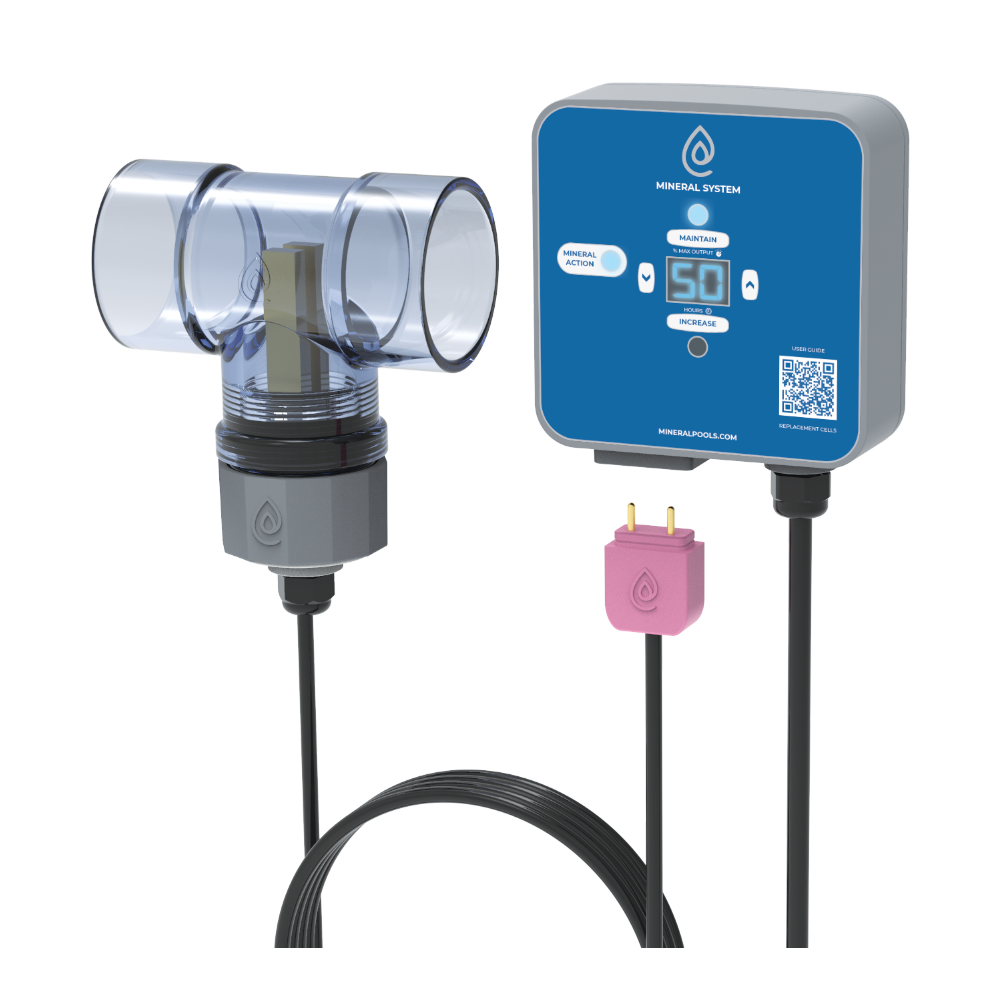
Chlorine burns off in the sun and degrades with water features and splashing, so minerals give you a backup to make sure there’s always an army of good guys in the water. The easiest, most natural, and most cost-effective way to deliver a residual mineral algaecide is with a pool ionizer. You can also use a more complete mineral system that is both an algaecide and long-lasting residual sanitizer.
7. Maintain a Low Level of Sanitizer
When the pool is balanced correctly, buffered with Borax, and populated with minerals, only a low chlorine or bromine sanitizer residual is needed – around half of what it says on the label will do the trick.
The easiest and most cost-effective way to deliver low sanitizer is with an inline chlorine feeder. Simply fill the chamber with slow-dissolving chlorine tablets and set the dial to the lower settings.
If you don’t have a chlorine feeder and don’t want to install one, add one 3″ tablet to your pool skimmer every week or two. Some pump and equipment manufacturers advise against this, but when you’re only using a few tablets a month, the equipment is not damaged.
Please note that these are guidelines only. It’s important to test water parameters weekly to ensure they’re in the correct range according to the labels on algaecide and sanitizer.
8. Shock Away Organics
The more you use your pool, the more organic material builds up. Wind and rain can also wash organics into the pool. Keep a shock product on hand to respond immediately to an influx of organics. If you want to keep the chlorine levels low, you can use a non-chlorine shock derived from the mineral potassium (e.g., potassium monopersulfate).
Apply the shock after pool parties, heavy use, or rainstorms. This will burn off excess organics before they overload the sanitizer and hand the water over to algae.
9. Test and Adjust Weekly
An ounce of prevention is worth a pound of cure. This is doubly true when it comes to your backyard pool. It’s tempting to look at the water and move on if it’s clear. However, problems appear in the test results before they are seen in the water.
It’s important to test the core parameters weekly and regularly adjust pH, alkalinity, chlorine, and mineral levels. If you see green, you’ve waited too long, and you’re in for a mighty battle with a costly arsenal of chemicals.
Closing
Let’s not think about that just yet. Subscribe to our monthly newsletter for more tips, and get a free hose filter and test strips to kick your season off right. You can unsubscribe at any time.
We’ll check in later to see how your opening went and ensure you get the most from your pool all year.
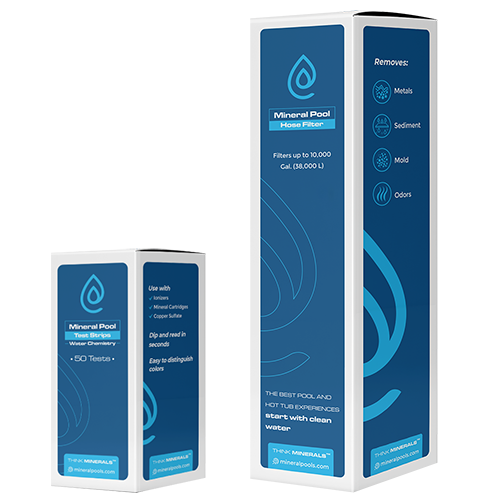
References
These products will help you get the most from your pool this season:
Start with a Clean Fill: Garden Hose Filter
Remove Phosphates: PHOSfree Lanthanum Phosphate Remover
Buffer with Borax: Using Bioguard Optimizer or Household Borax
Prevent Algae with Minerals: Using a Pool Ionizer or Mineral System
Maintain a Low Level of Sanitizer: Using an Inline Chlorinator
Sanitize: With Stabilized and Unstabilized Chlorine
Shock Away Organics: Using a Chlorine Shock or Non-Chlorine Shock
Test and Adjust Weekly: Using the Mineral Pool Test Strips and Copper Test Strips
[Links above to Amazon are affiliate links]



